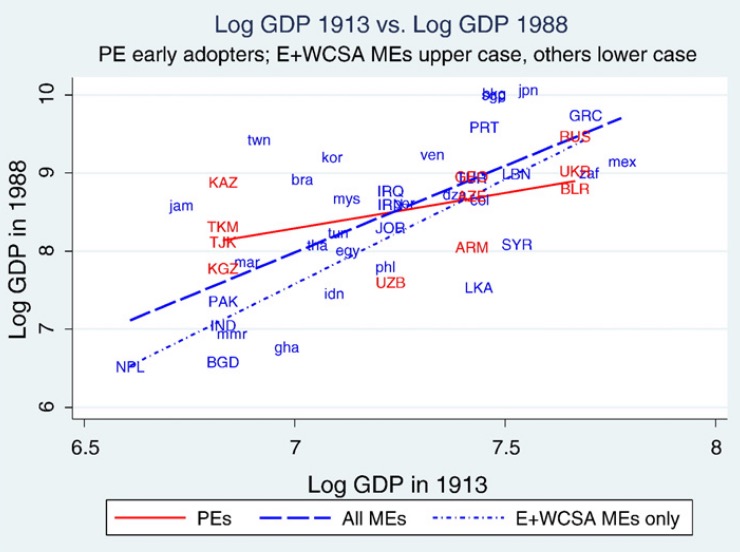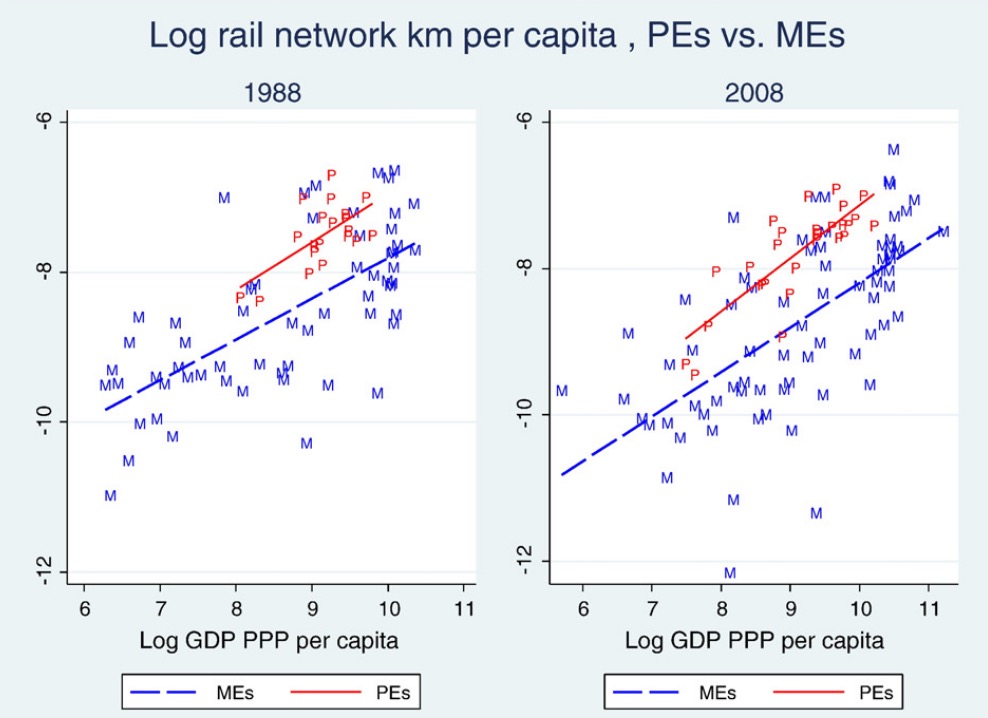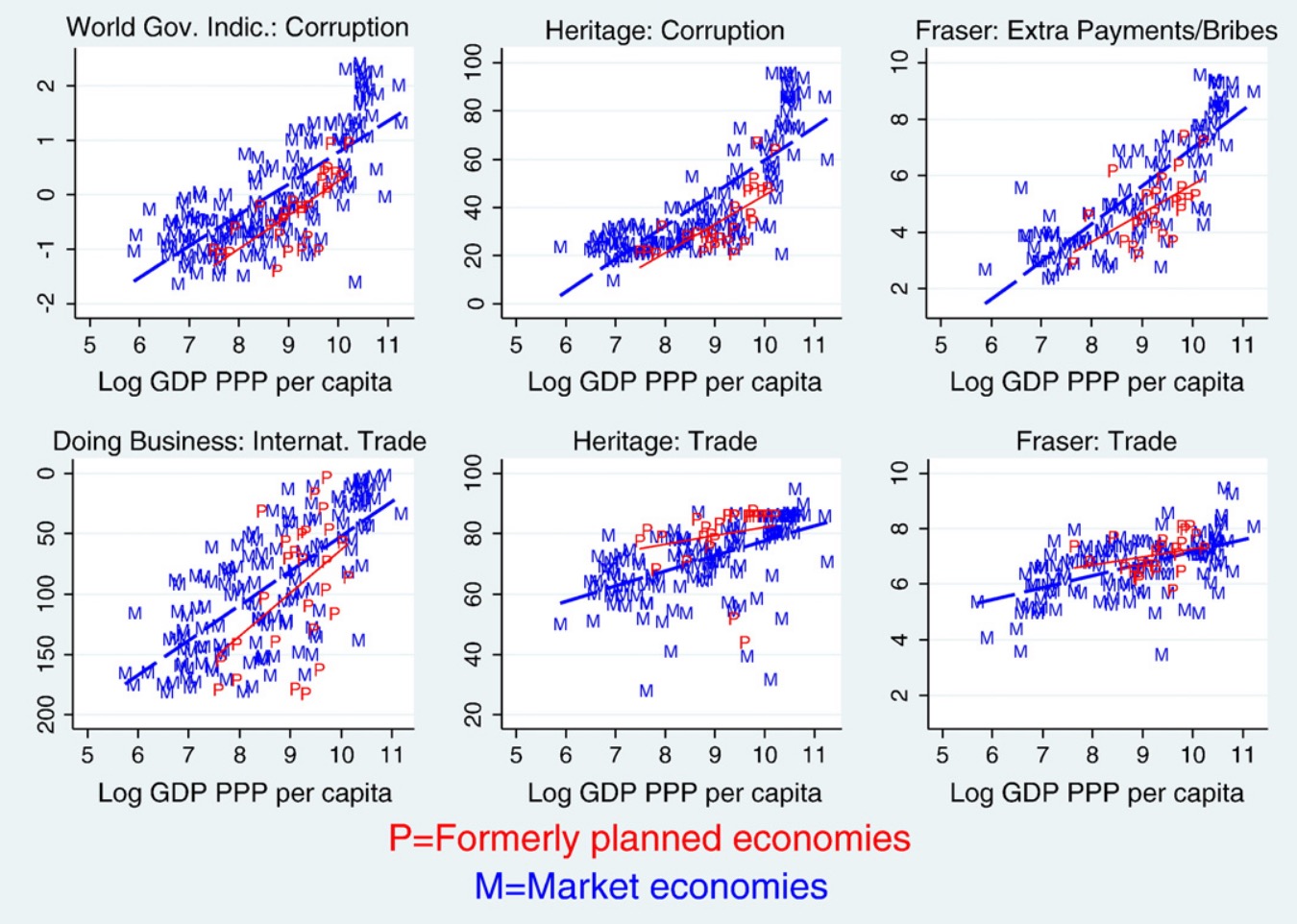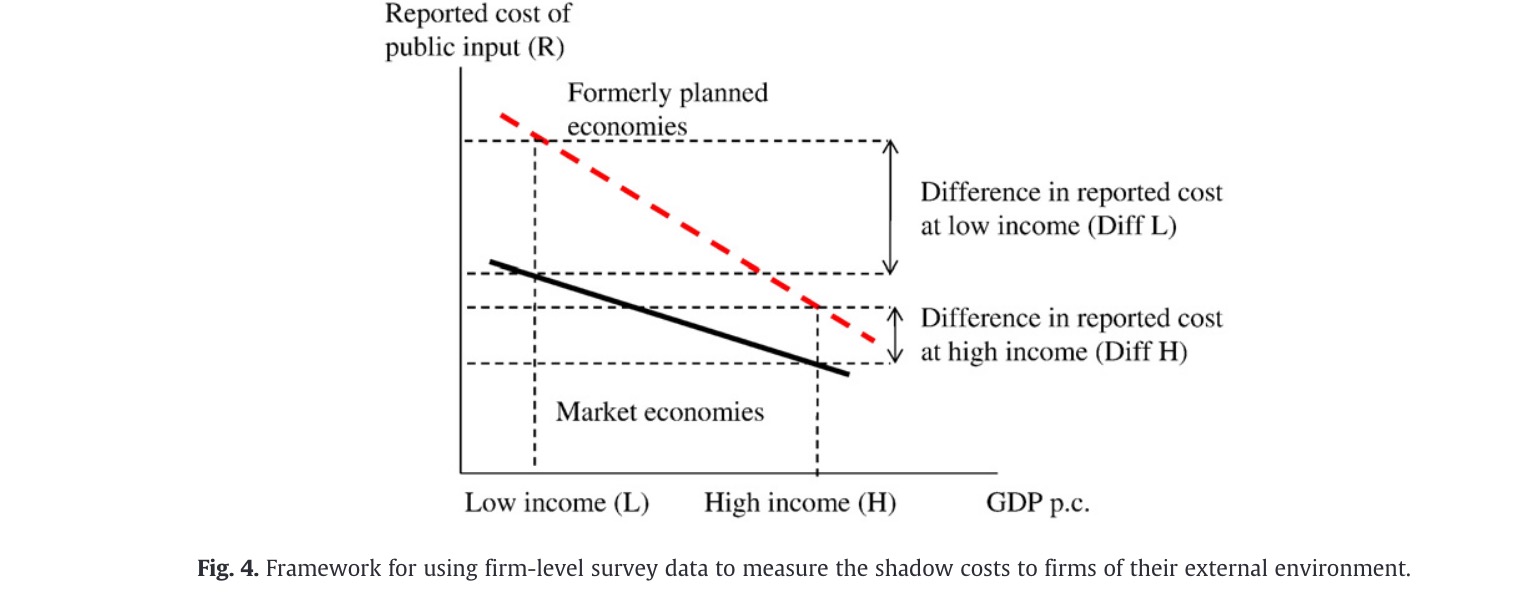23.05.2024 Effects in the Long run#
Communism = Soviet Power + Electrification (Lenin)
Hypotheses:
Planning = long run bad for growth
static allocative inefficiencies
inhibits adoption of higher up technology
no creative destruction
Planning = over-focus on physical investment and education
Methods: Regressions and a new Model
Planning and Growth#
Initial Advantage of Planning
mobilize savings better
better infra => higher ROI on investment
more ducation => higher real wages
=> good for pre-industrial countries
Adoption of Planning
Group: Russia and extended after 1.WW
Group: bloc expansion after 2.WW
Different types of adopter countries:
Agrarian (Balkan etc.)
industrious (Czech, East Germany, …)
Comparators:
European, Central Asian …
Method: Regression $\( ln(GDP) = \beta_0 + \beta_1 PLAN+ \beta_2 ln(GDP_{t1}) + \beta_3 (PLAN \cdot GDP) \)$
PLAN = Dummy for planned economy
Esitmation of Contrafact
Results:

ME = Market Economy
PE = planned economy
countries with higher GDP at start = comparatively lower GDP in end
vice-versa
Education and Investment#
Method = similar to above
Results:

Caveat: Aggreagte Infastrucutre =! usable infrastructue
planners planed only transport infratstructure, not personal (eg. commuter rail)
human capital measurement as years =! always usable in market economy (e.g Marxist study)
Insitutional Heritage
measured with „Ease of Doing Businnes“ Indicator
difficult indicators
no clear picture emerges

Model#
Data = individual Business Surveys
World BAnk Questionnaires
firms asked to evaluate public inputs
Telecoms, electriciy, skills, stability, …
how hindering they are
=> shadow price interpretation
General Results:

PE = hgigher shadow prices of public inputs
means more difficult business environment
rich PE = differ less from ME peers than poor PE vs their peers
poor PE vs their peers
better education, physical capital, labor costs etc
worse institutions: corruption, courts, …
=> Benefit of Communism depends on inital stage